
A loop antenna
QRSS RECEPTION WITH AN OLD VERSION 3 RTL.SDR DONGLE
AND... A LOOP ANTENNA!
(2022)

A loop antenna

and the old version 3 RTL.SDR dongle!
Why an RTL.SDR dongle?
It is cheap and therefore very suitable for the "poor man's" receiver. The latest improved version 3 has a TCXO and therefore a high frequency stability and frequency accuracy. That's exactly what we need for QRSS reception.
There are two modes. Below 24.5 MHz the direct sampling input is used. The HF signal is sampled with a frequency of 28,8 MHz and the processed data in the dongle is transferred to the PC via the USB connection. Above 24,5 MHz there is a tuner and you can use it up to 1750 MHz! For very little money you have a receiver up to 1750 MHz! So not only a QRSS receiver, but also for all other analog and digital modes!
I want to use it for QRSS reception on the shortwave bands up to 30 MHz. With the loop antenna, so just an all band QRSS receiving station, also suitable for special frequencies.
Nowadays there is a Version 4 RTL-SDR blog dongle that performs much better and can receive shortwave signals higher than 10 MHz! The performance with this loop antenna will be even better with such a new version! It has an HF upconverter and does not use direct sampling anymore!
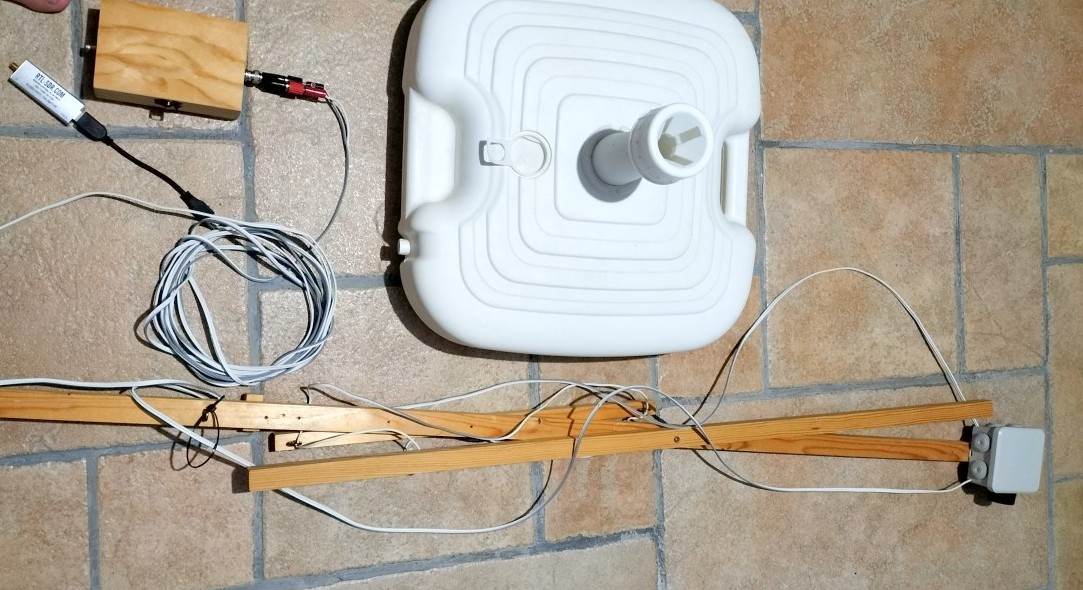
This is the complete QRSS receiver with the old Version 3 RTL.SDR dongle, HF isolation transformer and the folded loop antenna.
The loop antenna is placed in a plastic parasol base that is normally filled with water but is now unfilled.

HF isolation transformer. Two separate windings, 2x8 turns bifilar wound on an FT37-43 ferrite core.
The antenna is therefore completely separated from the receiver and thus attenuates radio interference via the cabling to the antenna.
AGC on or off?
The sensitivity of the RTL.SDR dongle was initially insufficient in the direct sampling mode that is used for frequencies lower than 24,5 MHz. But with the AGC (Automatic Gain Control) on, it was fine. So in direct sampling mode, turn the AGC on and in tuner mode for frequencies higher than 24,5 MHz, turn the AGC off.
Results
How do we test the RTL.SDR dongle with selective loop antenna? The dongle is connected to the loop antenna in parallel with a "normal" QRSS receiver. Receiving QRSS with the dongle is done with software, a Python program RTLSDRlop.py. We are going to compare the results. The loop antenna can be tuned from 3,3 MHz to 16 MHz. We test the QRSS reception at 80, 40, 30 and 20 meters. And also at 10 meters we are going to test the RTL.SDR dongle, not with the loop antenna but with a PA0RDT mini whip antenna. That frequency is above 24,5 MHz, so the built-in tuner is used instead of the direct sampling mode.
And the poor man's shortwave receiver performs very nicely! The frequent stability is also good and suitable for QRSS reception! Only 20 meters is clearly less good, probably because that frequency is very close to 14,4 MHz (half the sampling of 28,8 MHz frequency). Then the desired and undesired frequencies are very close to each other.
Nowadays there is a Version 4 RTL-SDR blog dongle that performs much better and can receive shortwave signals higher than 10 MHz! The performance with this loop antenna will be even better with such a new version! It has an HF upconverter and does not use direct sampling anymore!
It is a very cheap "poor man's" all round receiver with very acceptable performance! Not only for QRSS, but for all kinds of other analog and digital modes up to 1750 MHz!
Below the pictures, then you can decide for yourself what you think about it.
80 METERS
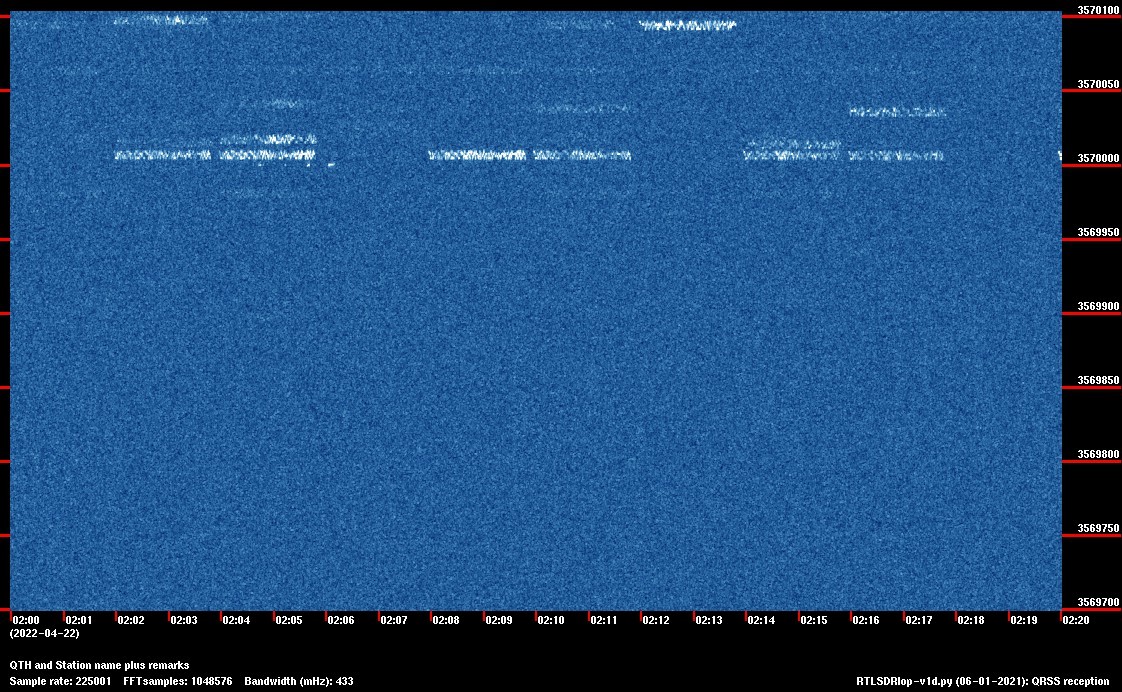
RTL.SDR dongle. Unfortunately no QRSS stations, but there are WSPR signals
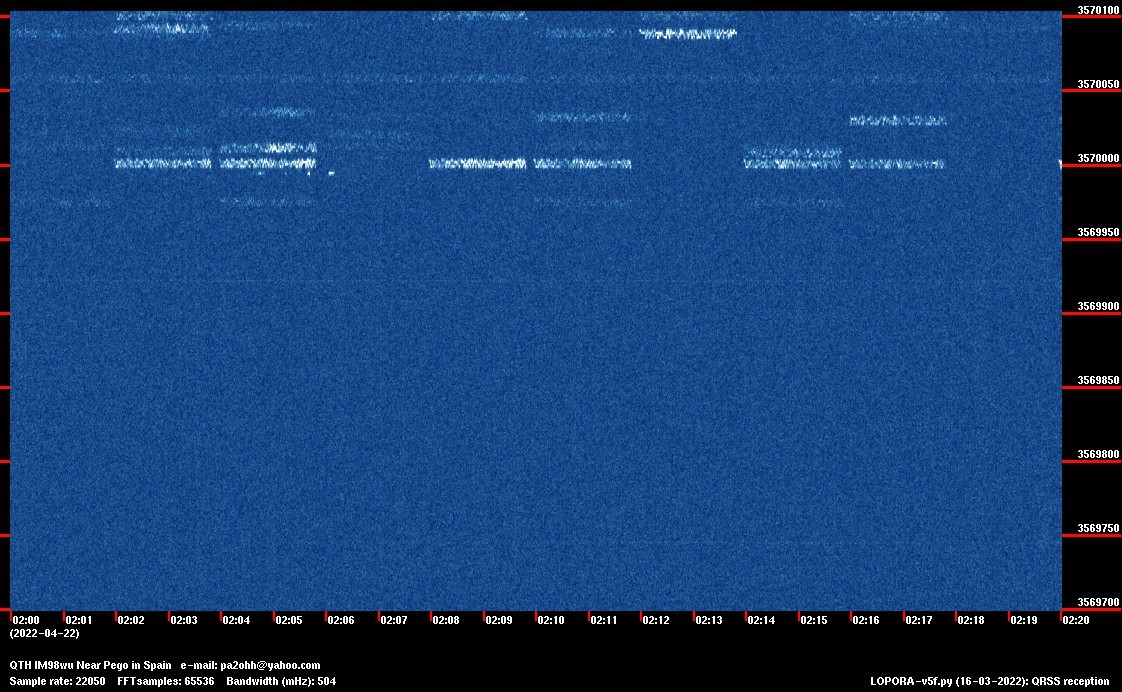
Standard QRSS receiver. Hardly any better
40 METERS
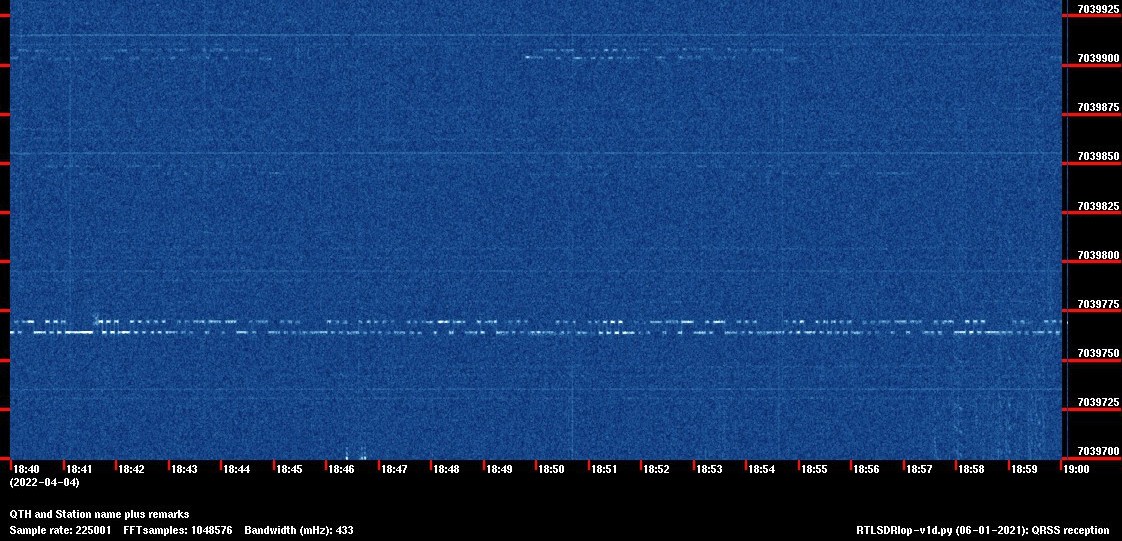
RTL.SDR dongle. Two QRSS signals
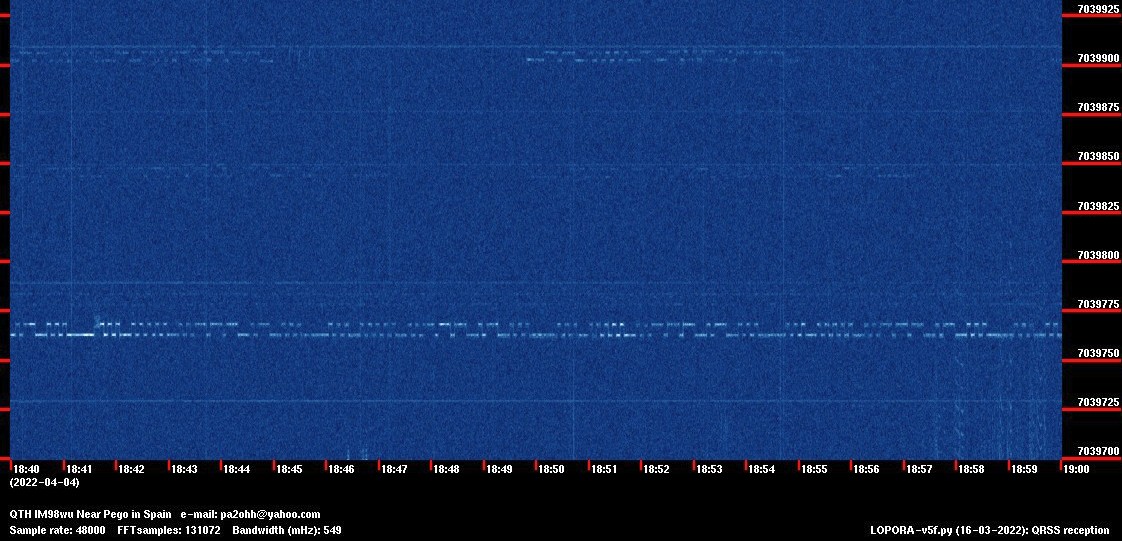
Standard QRSS receiver. Not better than the dongle!
30 METERS
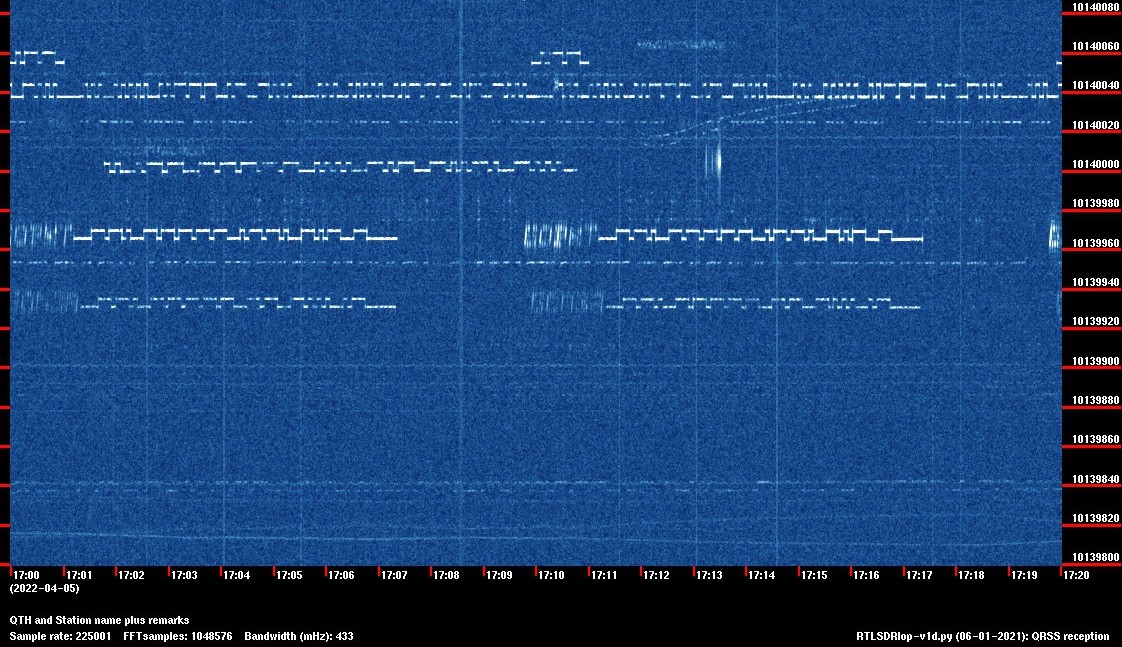
RTL.SDR dongle. Many QRSS signals

Standard QRSS receiver. All visible QRSS signals are also visible with the dongle!
20 METERS

RTL.SDR dongle. Weak QRSS signals
But the performance of the new Version 4 RTL-SDR blog dongle is much better, comparable with the standard QRSS reeceiver!

Standard QRSS receiver. Now the dongle is clearly worse...
Probably because that frequency is very close to 14,4 MHz (half the sampling of 28,8 MHz frequency).
10 METERS
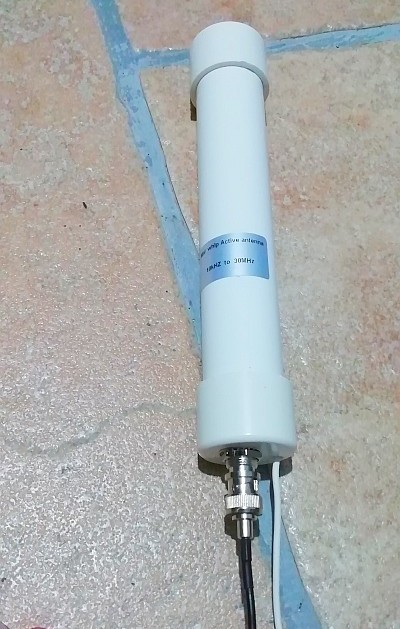
On 10 meters we test the RTL.SDR dongle with a mini whip antenna instead of the loop antenna

RTL.SDR dongle, now with the built-in tuner and a mini whip antenna instead of the direct sampling mode and the loop antenna

Standard QRSS receiver. No difference compared with the RTL.SDR dongle!